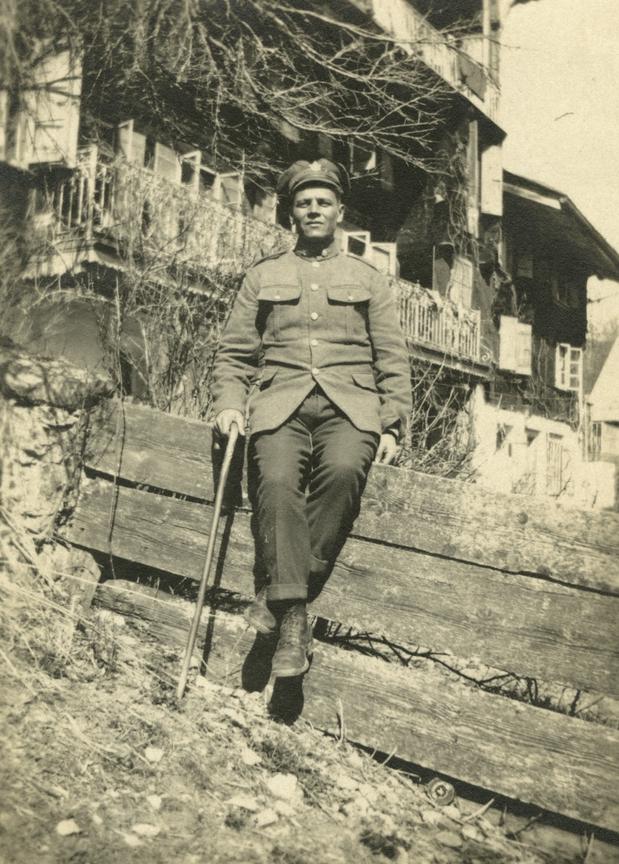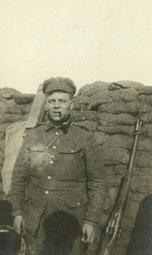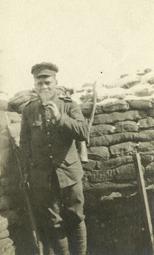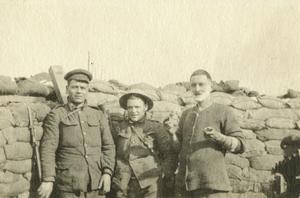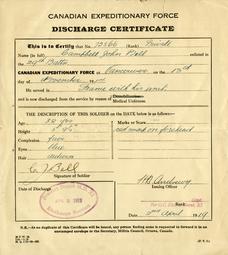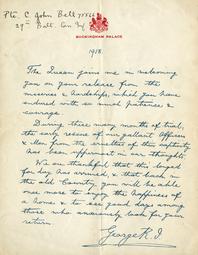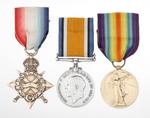Unit
29th Canadian Infantry Battalion (Vancouver)
Branch
Infantry
Service Component
Canadian Expeditionary Force
Service Number
75566
birth
1883/11/23
Prince Albert, Saskatchewan, Canada
death
1944/09/16
Vancouver, British Columbia, Canada
grave
Gender
Male
Campbell John Bain Bell was born in Prince Albert, Saskatchewan on 23 November 1883, but he and his family later moved to the United States. By 1900, his father, Mr. W. Bell, and his wife Margaret, were living in Jasper, Missouri, with their daughter Elizabeth and two sons, including Campbell. At the outbreak of war Campbell was working as a Trust Company manager.
Bell enlisted in Vancouver on 13 November 1914 giving his sister, Elizabeth of Moorhead, Minnesota, as his next of kin. He was transferred immediately to the 29th Canadian Infantry Battalion (Vancouver), known as Tobin’s Tigers, and shipped out to the United Kingdom aboard the SS Missambie on 20 May 1915. The battalion arrived in France on 15 September 1915, joining the 6th Infantry Brigade in the 2nd Canadian Division. By April 1916 the Division was in the Ypres area of Flanders where it got caught up in the Action of the St Elois Craters. Casualties in the Brigade were high – one of them was Private Bell who was buried in a shell burst. He was pulled out by advancing German troops and made prisoner.
Private Bell was imprisoned in a Prisoner of War (POW) camp in Glessen, Hesse, Germany, and assigned to labour detail. On one occasion he injured his hand working on a farm and, apparently after an escape attempt, was badly beaten. Food was scarce and Private Bell lost 40 pounds over the course of his imprisonment. He started suffering from heart problems and, in December 1917, he was transferred to Switzerland under a programme arranged between the belligerents that sick POWs could be interred there if the detaining nation was unable to care for them. Bell was hospitalized at Chateau d’Orx and then repatriated to the United Kingdom in March of 1918. There he was admitted to the King George Hospital to be treated for a heart murmur, tachycardia and dyspnea as well as neurasthenia (shell shock). He was subsequently transferred to the Ontario General Hospital in Shorncliffe, United Kingdom, and from there sent back to Canada on 24 September 1918 on HMT Tunesian. In October he was taken on strength at the District Depot in Victoria where he remained in hospital. He was eventually discharged on 2 April 1919, giving the Royal Columbia Hospital in New Westminster as his address.
His post-service records are sparse but on 17 October 1924 he married Jessie Moore in Alert Bay, British Columbia. In 1935 the couple was living on Manitoba Street in New Westminster, British Columbia, where Bell was working as a manager. Bell worked with the government, examining the treatment of POWs, and was active in the New Westminster branch of the Canadian Legion. He also pressed for the government to be prepared to support returning veterans of the Second World War. His ill health continued, and he left the Legion in 1943. He died in Vancouver on 16 September 1944.

